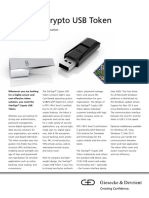0% found this document useful (0 votes)
74 views7 pagesPenetration Testing Fundamentals
Penetration Testing, also known as Ethical Hacking, is a legal simulation of cyberattacks aimed at identifying vulnerabilities in systems. The process involves five phases: reconnaissance, scanning, gaining access, maintaining access, and covering tracks/reporting, utilizing various tools and techniques. Ethical considerations are crucial, requiring written permission and adherence to a code of ethics to ensure security improvement rather than system damage.
Uploaded by
raphaelvicunaCopyright
© © All Rights Reserved
We take content rights seriously. If you suspect this is your content, claim it here.
Available Formats
Download as PDF, TXT or read online on Scribd
0% found this document useful (0 votes)
74 views7 pagesPenetration Testing Fundamentals
Penetration Testing, also known as Ethical Hacking, is a legal simulation of cyberattacks aimed at identifying vulnerabilities in systems. The process involves five phases: reconnaissance, scanning, gaining access, maintaining access, and covering tracks/reporting, utilizing various tools and techniques. Ethical considerations are crucial, requiring written permission and adherence to a code of ethics to ensure security improvement rather than system damage.
Uploaded by
raphaelvicunaCopyright
© © All Rights Reserved
We take content rights seriously. If you suspect this is your content, claim it here.
Available Formats
Download as PDF, TXT or read online on Scribd
/ 7





























































































































